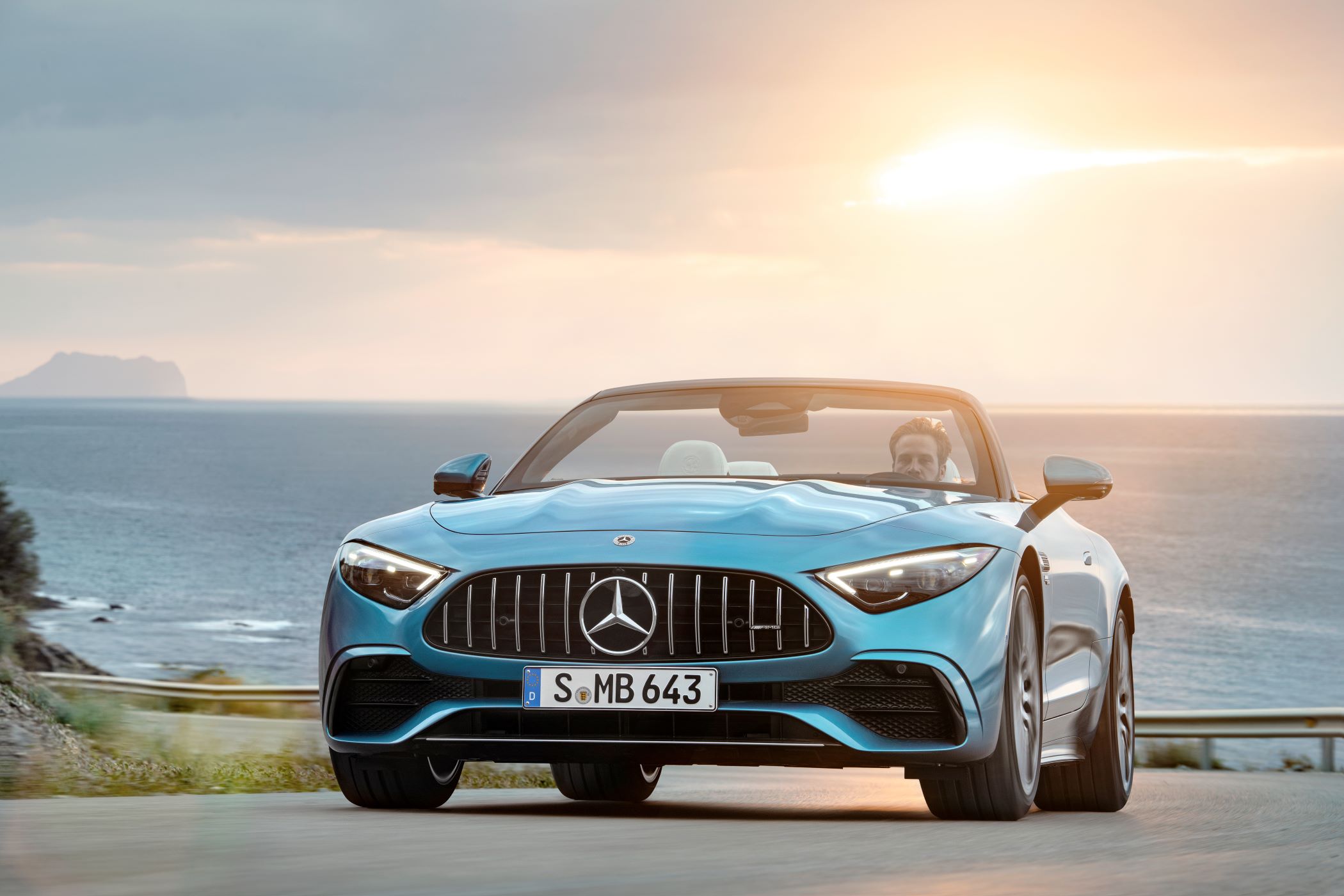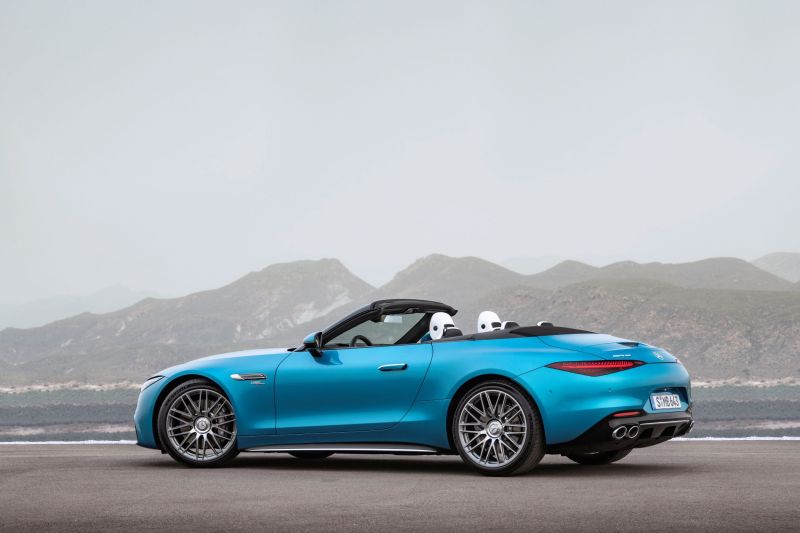
Two years ago, Mercedes-AMG unveiled the SL Roadster, also known as the R232. Mercedes-AMG reimagined it by adding a new fabric roof, modern tech modification, and a standard two-plus-two seating layout. Two variants of the R232 were immediately available for sale in the U.S. — the AMG SL 63 and AMG SL 55.
There was just one thing missing — the entry-level SL Roadster dubbed the AMG SL 43, was not made available in the U.S. despite it being sold in Europe. Luckily, Mercedes-AMG just announced that the AMG SL 43 will be available to order in the U.S. starting this summer.
What can you expect? The AMG SL 43 looks almost like the AMG SL 63 and the AMG SL 55, but the round tailpipes and rear bumper with no vents distinguishes this AMG variant from its siblings. The AMG SL 43 also comes with 19-inch wheels standard, which you can upgrade to 20 or 21-inch wheels if you want to improve aerodynamics. (Just remember larger wheels mean a stiffer ride, too.)

In addition to those styling details, AMG SL 43 is powered by a two-liter four-cylinder engine that can peak at 375 horsepower and 354 lb-ft of torque. This obviously doesn’t match up to the four-liter V8 engines used in the AMG SL 63 and AMG SL 55 SL Roadster variants, but this is where things get interesting — the four-cylinder engine fitted in the AMG SL 43 is turbocharged by the technology used by Mercedes-AMG in its Formula 1 racers. More succinctly, it features a hybrid turbocharger with an electric and gas system.
Since the turbocharger is designed with an electric motor, you don’t have to wait for it to spool up. In other words, the acceleration happens immediately with no turbo lag when you step on the gas pedal. It also means that you can unlock higher torque at lower engine speeds for even quicker off-the-line boost.
Further, the AMG SL 43 roadster is rear-wheel drive, unlike its all-wheel drive siblings. What’s more, the engine is mounted lengthwise while connected to a nine-speed multi-clutch transmission. As a result, the AMG SL 43 roadster is lighter than AMG SL 63 and the AMG SL 55.
Sure, it doesn’t have the engine power of the AMG SL 55 or AMG SL 63, but the AMG SL 43 Roadster is better suited for handling, agility, and efficiency. It’s also fast on its own merit achieving 0 to 60 mph in 4.8 seconds. As for the price, it starts at $109,900 — $27,500 cheaper than the AMG SL 55 Roadster. A lower price-point and bleeding edge tech without compromising the satisfaction a gas-powered roadster brings when you stomp on the gas pedal? Yes, please.



